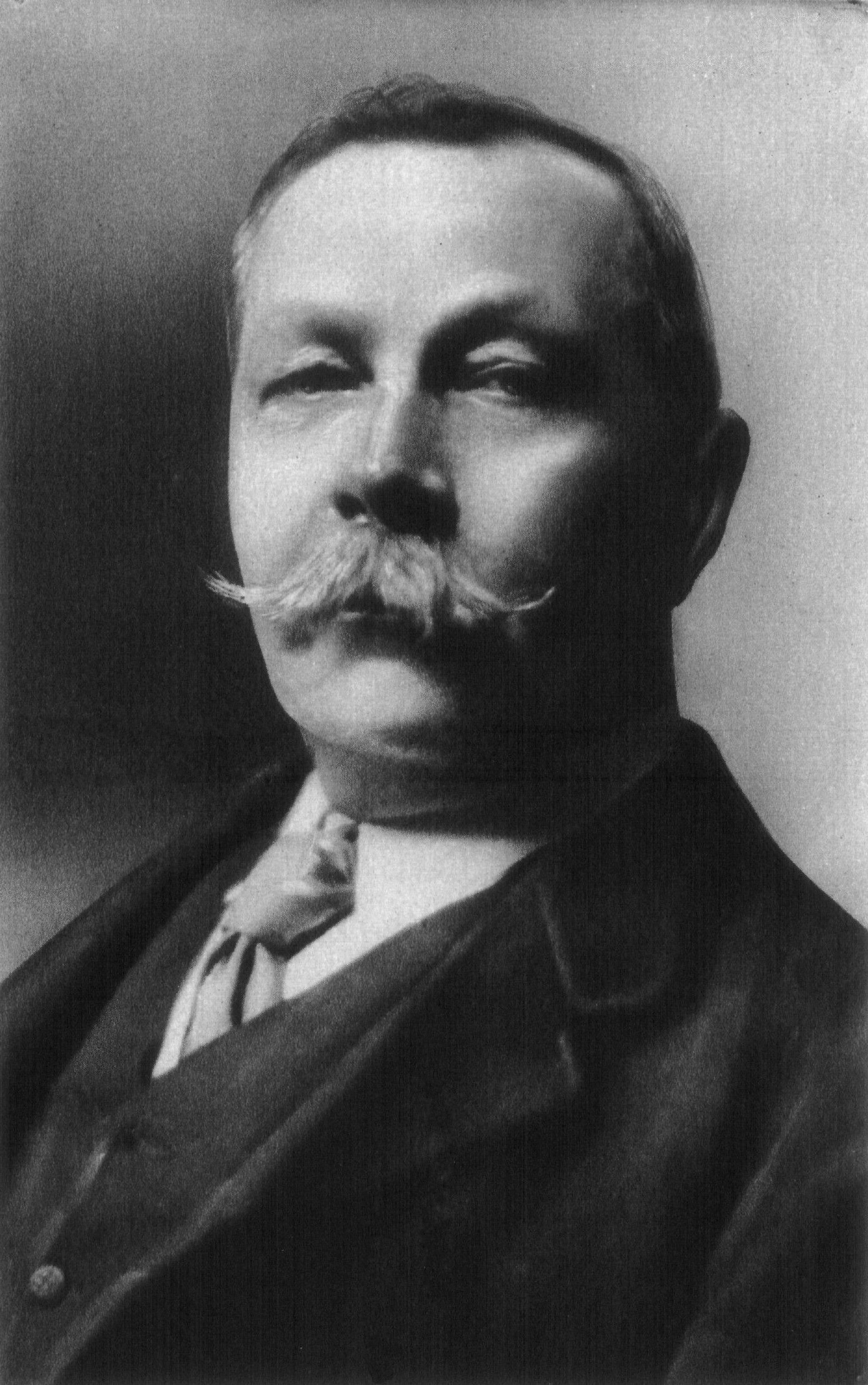 Not much about Holmes in Doyle book
Not much about Holmes in Doyle book08 November, 2007
By F.N. D‘ALESSIO, Associated Press Writer
"Arthur Conan Doyle: A Life in Letters" (The Penguin Press. 608 pages. $37.95), edited by Jon Lellenberg, Daniel Stashower and Charles Foley: Sir Arthur Conan Doyle was famously convinced that the dead and the living could communicate, so it might be thoughtful of his shade to return to his native Edinburgh, Scotland, and have a chat with a current resident, J.K. Rowling.
Rowling wouldn‘t get much direct advice from the current volume, though, since it contains surprisingly little information about Holmes or how Doyle created him. What she would get would be a chatty 53-year chronicle of a hardworking writer-physician‘s climb out of genteel poverty to prosperity and world fame.
This presents some problems for the editors. Context, and the handful of her own letters that are quoted, reveal Mary Doyle as a remarkable woman — intelligent, fluent in both English and French, interested in her son‘s medical and literary careers, and politically astute. But she was still his mother; and Victorian men were famously reticent about what could be discussed with their womenfolk.
On the literary side, Doyle‘s letters more often refer to the historical novels he regarded as his best work, rather than to Holmes, but there are amusing passages involving William Gillette, the American actor who grew rich portraying Holmes on Broadway.
Doyle‘s second wife, the young beauty Jean Leckie, appears more often in the letters because Doyle had formed an apparently platonic connection with her while Touie was still alive.
The editors of this volume are Doyle fans out to protect his reputation, so some matters are shrouded over. We learn of Doyle‘s noble efforts to free a wrongly convicted man in a real-life murder mystery, but nothing of his defense of (spiritualism) fraudulent mediums. And little mention is made of his credulity in the "Cottingley Fairies" hoax — something Holmes would have dismissed within two puffs of his pipe.
By F.N. D‘ALESSIO, Associated Press Writer
"Arthur Conan Doyle: A Life in Letters" (The Penguin Press. 608 pages. $37.95), edited by Jon Lellenberg, Daniel Stashower and Charles Foley: Sir Arthur Conan Doyle was famously convinced that the dead and the living could communicate, so it might be thoughtful of his shade to return to his native Edinburgh, Scotland, and have a chat with a current resident, J.K. Rowling.
Rowling wouldn‘t get much direct advice from the current volume, though, since it contains surprisingly little information about Holmes or how Doyle created him. What she would get would be a chatty 53-year chronicle of a hardworking writer-physician‘s climb out of genteel poverty to prosperity and world fame.
This presents some problems for the editors. Context, and the handful of her own letters that are quoted, reveal Mary Doyle as a remarkable woman — intelligent, fluent in both English and French, interested in her son‘s medical and literary careers, and politically astute. But she was still his mother; and Victorian men were famously reticent about what could be discussed with their womenfolk.
The schoolboy writing home from a Jesuit school in England (Stoneyhurst) and requesting turkeys, smoked tongues, sardines and candy turns out to be doing so because he had to spend holidays at school (where holiday meals were not provided); his family was too poor to provide him a ticket back to Scotland.
Because Doyle did his medical studies in Edinburgh, where he lived at home, there are few letters from those crucial years, when he studied under Dr. Joseph Bell, the
acknowledged model for Holmes.
On the literary side, Doyle‘s letters more often refer to the historical novels he regarded as his best work, rather than to Holmes, but there are amusing passages involving William Gillette, the American actor who grew rich portraying Holmes on Broadway.
Doyle‘s second wife, the young beauty Jean Leckie, appears more often in the letters because Doyle had formed an apparently platonic connection with her while Touie was still alive.
The editors of this volume are Doyle fans out to protect his reputation, so some matters are shrouded over. We learn of Doyle‘s noble efforts to free a wrongly convicted man in a real-life murder mystery, but nothing of his defense of (spiritualism) fraudulent mediums. And little mention is made of his credulity in the "Cottingley Fairies" hoax — something Holmes would have dismissed within two puffs of his pipe.
Link to orginal article (here)
It seems unlikely that Daniel Stashower, whose biography of Conan Doyle deals extensively with his spiritualist crusade, would be involved with supressing material on that topic. A more logical explanation might be found in the fact that a majority of the letters were written to his mother, who died in 1920, before the incident of the faries, and before the major portion of his spiritualist works were written.
ReplyDelete